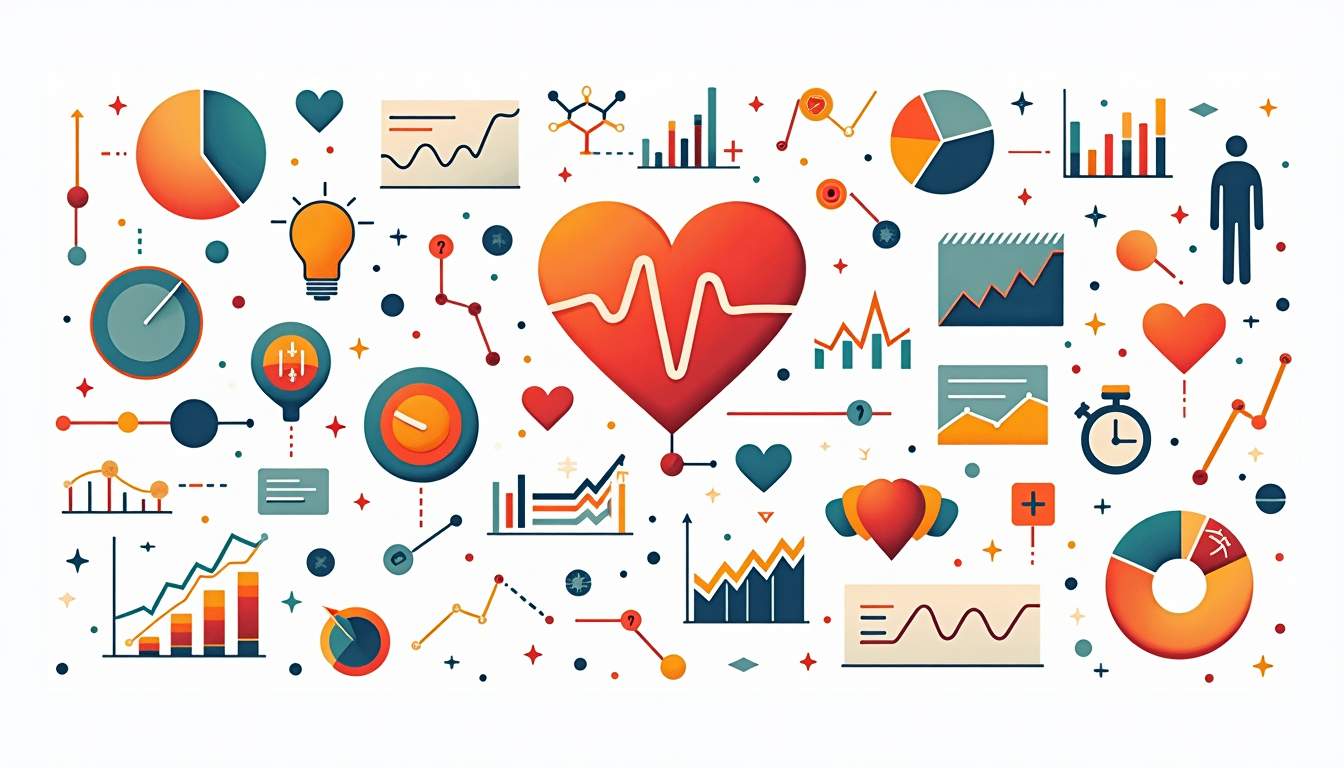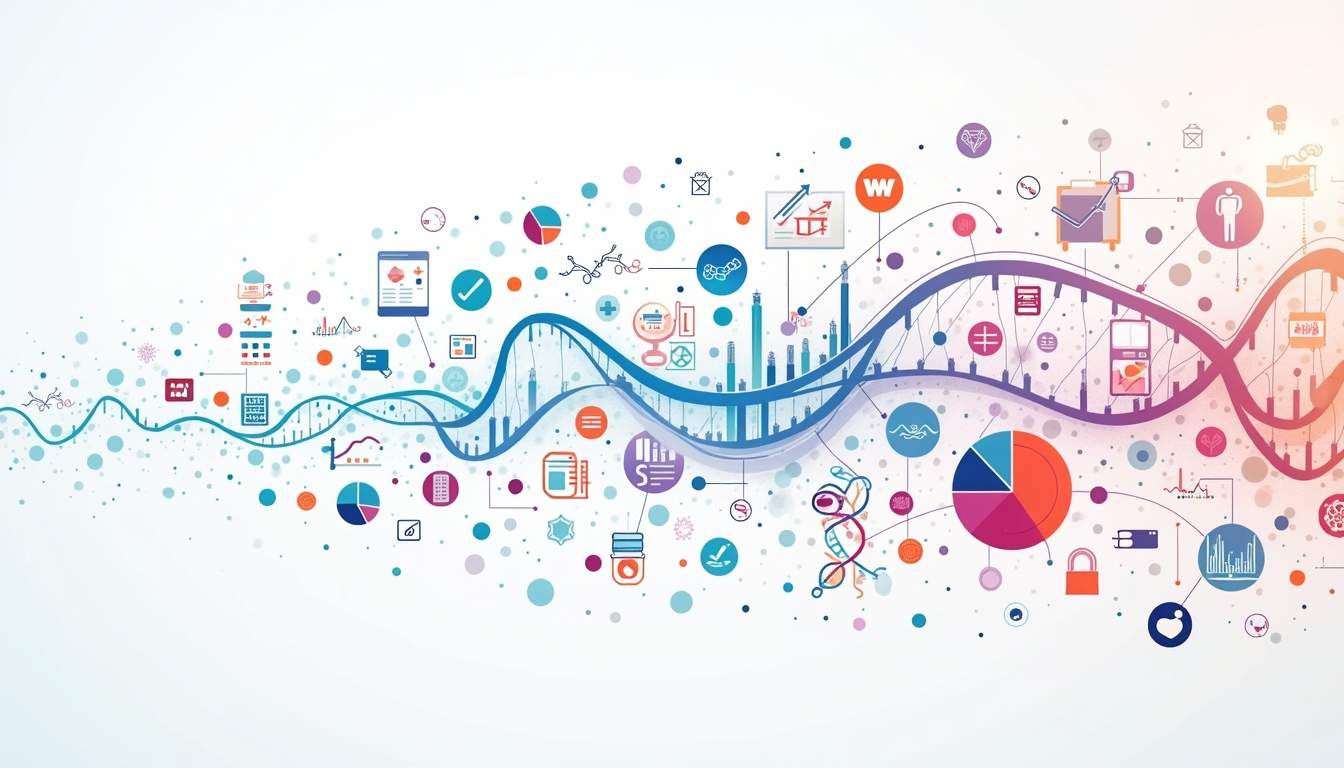In today’s data-driven world, numbers surround us, especially when it comes to health. From daily step counts and heart rate readings to complex blood test results and genetic markers, the sheer volume of health data can be overwhelming. But these numbers hold immense potential. When interpreted correctly, they can transform vague feelings of wellness or illness into a clearer, actionable picture of health.
This article explores how we can turn raw numbers into meaningful insights, helping individuals, healthcare providers, and policymakers make better decisions. By understanding the story behind the data, health becomes more than just a set of metrics—it becomes a comprehensive narrative about well-being.
Understanding the Language of Health Data
What Do Health Numbers Really Mean?
Numbers in health are often seen as cold and clinical, but each figure tells a story. For example, a blood pressure reading of 120/80 mmHg isn’t just a number; it reflects how hard your heart is working to pump blood through your arteries. Similarly, a blood glucose level indicates how well your body manages sugar, providing clues about diabetes risk. These numbers can also serve as vital indicators for preventive measures. For instance, a consistently high blood pressure reading may prompt lifestyle changes or medication to avert potential heart disease.

Understanding the context behind these numbers is crucial. A single elevated cholesterol reading doesn’t necessarily mean immediate danger, but when combined with other factors like age, family history, and lifestyle, it paints a more complete picture of cardiovascular risk. Moreover, tracking these numbers over time can reveal trends that might not be apparent from a single test. For example, a gradual increase in cholesterol levels may signal the need for dietary adjustments or increased physical activity before more serious health issues arise.
The Challenge of Interpretation
One of the biggest hurdles is that health data can be complex and nuanced. Different labs may use varying reference ranges, and what’s normal for one person might be abnormal for another. Additionally, numbers can fluctuate throughout the day or in response to temporary conditions like stress or illness. For instance, cortisol levels, which are often linked to stress, can vary significantly based on time of day, making it essential to consider when a test is taken.
This complexity means that raw numbers alone are not enough. They need to be interpreted in context, ideally by healthcare professionals who can consider the whole person rather than isolated data points. However, with advances in technology and education, individuals are becoming more empowered to understand their own health data. Wearable devices and health apps have made it easier for people to track vital signs and other metrics, fostering a more proactive approach to health management. As a result, patients are increasingly engaging in discussions with their healthcare providers, asking informed questions about their health data, and taking an active role in their wellness journeys. To learn more about how technology is transforming personal health tracking, visit Aspedan through the following link: https://aspedan.com/
From Raw Data to Actionable Insights
Personal Health Tracking: Making Data Work for You
Wearable devices and health apps have revolutionized personal health tracking. Devices that monitor heart rate, sleep quality, physical activity, and even blood oxygen levels generate a constant stream of data. When analyzed over time, these numbers reveal patterns that can guide lifestyle changes.
For instance, noticing that sleep quality dips on days with high stress can encourage someone to adopt relaxation techniques. Tracking step counts and gradually increasing daily goals can improve cardiovascular health. The key is not just collecting data but using it to inform decisions that enhance well-being. Moreover, many of these devices come equipped with features that allow users to set reminders for hydration, medication, or even mindfulness breaks, further supporting a holistic approach to health management.
Additionally, the social aspect of health tracking cannot be overlooked. Many apps allow users to share their progress with friends or family, creating a supportive community that fosters accountability. This social engagement can motivate individuals to stick to their health goals, whether it’s participating in friendly step competitions or sharing healthy recipes. By transforming health data into a shared experience, users can find encouragement and inspiration from others on similar journeys.
Integrating Multiple Data Sources
Health is multifaceted, and no single number can capture it fully. Integrating data from various sources—lab tests, wearable devices, medical history, and even genetic information—creates a more holistic view. This integration allows for personalized health recommendations tailored to an individual’s unique profile.
For example, combining genetic risk factors with lifestyle data can help identify individuals who may benefit from earlier screening or preventive measures. Similarly, merging medication records with symptom tracking can alert healthcare providers to potential side effects or drug interactions. This comprehensive approach not only enhances the accuracy of health assessments but also empowers patients to take an active role in their healthcare decisions.
Furthermore, advancements in artificial intelligence and machine learning are paving the way for predictive analytics in health. By analyzing vast amounts of integrated data, these technologies can identify trends and potential health risks before they manifest. For instance, algorithms can predict the likelihood of developing chronic conditions based on a combination of genetic predispositions and lifestyle choices, enabling proactive interventions that can significantly improve long-term health outcomes. As this technology continues to evolve, the potential for personalized medicine becomes increasingly promising, offering tailored strategies that align with each individual’s health journey.
Technology’s Role in Clarifying Health Data
Artificial Intelligence and Machine Learning
Artificial intelligence (AI) and machine learning are transforming how health data is analyzed. These technologies can sift through vast datasets to identify patterns that might be invisible to the human eye. AI algorithms can predict disease risk, suggest treatment options, and even detect early signs of illness from subtle changes in data.
For example, AI-powered tools can analyze imaging data to spot early signs of cancer or use voice analysis to detect respiratory conditions. By turning raw numbers into predictive insights, AI helps shift healthcare from reactive to proactive, enabling earlier interventions and better outcomes. Moreover, as these algorithms are trained on increasingly diverse datasets, they can improve their accuracy and reduce biases, leading to more equitable healthcare solutions across different populations.
Additionally, the integration of AI in telemedicine platforms is enhancing patient care by providing real-time analytics during virtual consultations. Physicians can receive instant feedback on patient data, allowing them to make informed decisions swiftly. This not only streamlines the diagnostic process but also fosters a collaborative environment where healthcare providers can share insights and refine treatment plans based on collective data analysis.
Visualization Tools: Seeing the Story Behind the Numbers
One of the most effective ways to make health data understandable is through visualization. Graphs, charts, and interactive dashboards turn complex datasets into intuitive visuals. These tools help both patients and clinicians grasp trends, compare results over time, and identify areas needing attention.
For instance, a blood sugar trend chart can reveal how diet and exercise affect glucose levels throughout the day. Similarly, a heart rate variability graph can indicate stress levels or recovery status. By making data visually accessible, these tools empower informed decision-making. Furthermore, advanced visualization techniques, such as heat maps and geographical information systems, can illustrate public health trends, enabling health officials to identify outbreaks and allocate resources more effectively.
In addition to improving individual patient care, visualization tools can facilitate community health initiatives by highlighting disparities in health outcomes. By presenting data in a clear and engaging manner, stakeholders can better advocate for policy changes and resource allocation to address these inequities. This not only enhances public awareness but also fosters a sense of community involvement in health promotion efforts, ultimately leading to healthier populations.
Bridging the Gap Between Data and Human Experience
Listening to the Patient’s Story
Numbers are invaluable, but they don’t capture everything. Symptoms, emotions, and personal experiences provide essential context that data alone cannot convey. A patient’s narrative helps healthcare providers understand how numbers translate into real-life impacts.
For example, two people with the same cholesterol level might have very different health risks depending on factors like diet, exercise, and family history. Similarly, a person’s quality of life and mental health are critical components of overall wellness that numbers can only partially reflect.
Empowering Patients Through Education
To truly benefit from health data, individuals need education and support. Understanding what numbers mean, how to interpret trends, and when to seek medical advice fosters a collaborative approach to health management. This empowerment leads to better adherence to treatment plans and healthier lifestyle choices.
Healthcare providers play a key role by communicating clearly and providing resources that demystify health metrics. Community programs and digital platforms also contribute by offering accessible information tailored to diverse populations.
The Future of Health Data: Towards Precision and Personalization
Precision Medicine: Tailoring Care to the Individual
Precision medicine represents the next frontier in turning health numbers into actionable insights. By leveraging genetic, environmental, and lifestyle data, treatments can be customized to each person’s unique biology. This approach increases effectiveness and minimizes side effects.

For example, cancer therapies are increasingly designed based on the genetic profile of a tumor, improving outcomes significantly. Similarly, pharmacogenomics helps determine the best medication and dosage for an individual, reducing trial-and-error prescribing.
Population Health and Public Policy
Beyond individual care, health data plays a vital role in shaping public health strategies. Aggregated and anonymized data helps identify trends, monitor outbreaks, and allocate resources effectively. Policymakers can use this information to design interventions that improve health outcomes at the community and national levels.
For instance, data on obesity rates, vaccination coverage, or air quality informs programs targeting prevention and health promotion. As data collection becomes more sophisticated, the potential for informed policy decisions grows, ultimately benefiting society as a whole.
Conclusion
Health numbers are more than just figures on a page—they are pieces of a larger puzzle that, when assembled thoughtfully, reveal a clearer picture of well-being. By understanding the meaning behind the data, integrating multiple sources, leveraging technology, and valuing human experience, health can be managed more effectively and compassionately.

As individuals become more engaged and healthcare systems more data-savvy, the promise of turning numbers into actionable health insights becomes a reality. This transformation holds the potential to improve lives, reduce costs, and foster a healthier future for all.
